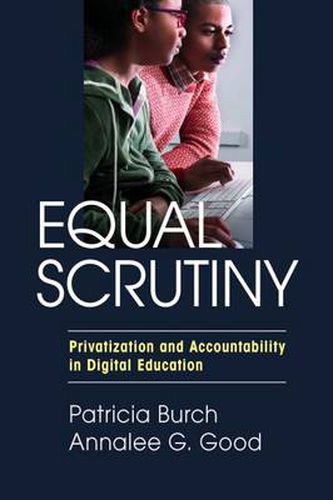Readings Newsletter
Become a Readings Member to make your shopping experience even easier.
Sign in or sign up for free!
You’re not far away from qualifying for FREE standard shipping within Australia
You’ve qualified for FREE standard shipping within Australia
The cart is loading…






In the current rush to adopt and expand digital learning, many important considerations are being overlooked that will have major consequences for the future of American public education. As private education technology contractors and vendors move deeper into the work of public education, questions concerning the quality of the services, who is served, and who benefits need to be answered.
Based on participatory research and other studies of three types of digital education - digital courses, blended learning, and online tutoring - Equal Scrutiny offers readers an inside view of what is really going on in the world of digital education and the uneven experiences of students, their parents, and teachers.
The authors also offer critical questions that need to be asked in order to - in the authors words -
ensure that technology adds value to the learning and lives of students and staff in public school communities .
$9.00 standard shipping within Australia
FREE standard shipping within Australia for orders over $100.00
Express & International shipping calculated at checkout
In the current rush to adopt and expand digital learning, many important considerations are being overlooked that will have major consequences for the future of American public education. As private education technology contractors and vendors move deeper into the work of public education, questions concerning the quality of the services, who is served, and who benefits need to be answered.
Based on participatory research and other studies of three types of digital education - digital courses, blended learning, and online tutoring - Equal Scrutiny offers readers an inside view of what is really going on in the world of digital education and the uneven experiences of students, their parents, and teachers.
The authors also offer critical questions that need to be asked in order to - in the authors words -
ensure that technology adds value to the learning and lives of students and staff in public school communities .